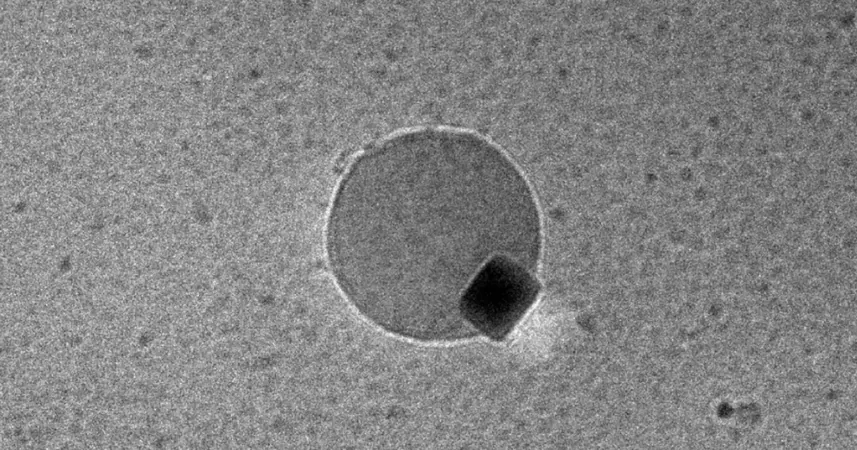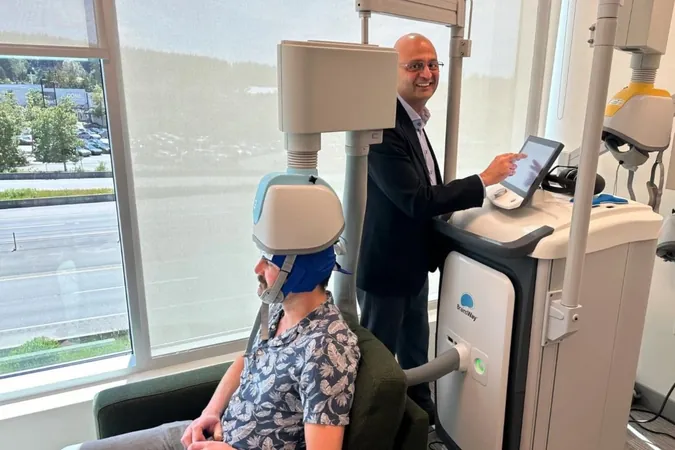
Revolutionary Breakthrough: Scientists Capture First-Ever Footage of Water Formation!
2024-11-23
Author: William
Revolutionary Breakthrough: Scientists Capture First-Ever Footage of Water Formation!
In an unprecedented scientific achievement, researchers have successfully captured video footage of hydrogen and oxygen atoms merging to form water (H2O) at a molecular level—a feat that has eluded scientists until now. This significant advancement was made possible by a team from Northwestern University in Illinois, who devised a groundbreaking method to observe these gas molecules in real-time.
Using specialized nanoreactors outfitted with glassy membranes, the scientists created an environment suitable for viewing gas molecules through a high-vacuum transmission electron microscope. This complex setup is a marvel of modern science, but the success of the technique marks a pivotal moment for the research community.
The study focused on palladium, a rare metal known for its ability to facilitate the rapid generation of water from hydrogen and oxygen. While the phenomenon of water generation via palladium wasn't new, the inability to visualize the process hampered a deeper understanding of the underlying mechanics. Now, with this innovative observation technique, researchers can unlock new insights into the reaction dynamics.
Yukun Liu, the study’s lead author, stated, “It’s a known phenomenon, but it was never fully understood. Combining direct visualization of water generation with atomic-scale structure analysis has allowed us to uncover what’s happening during the reaction and how to optimize it.”
The implications of this discovery extend far beyond mere academic curiosity. Scientists believe that mastering water generation could have profound effects, particularly for space exploration. The ability to efficiently produce water from hydrogen and oxygen gases—using palladium as a catalyst—would significantly enhance the feasibility of long-term human habitation in space, making it less reliant on Earth-bound supplies.
Senior author Vinayak Dravid added, “By visualizing nanoscale water generation, we identified optimal conditions for rapid water formation under ambient settings. This has significant ramifications for practical applications in deep space, enabling water generation using gases and metal catalysts with minimal reaction conditions.”
In addition to understanding the water production process, the team discovered that the order in which hydrogen and oxygen are introduced greatly influences the rate at which palladium can generate water. This discovery not only advances scientific knowledge but could expedite developments in various technologies reliant on water synthesis.
This historic breakthrough has already made waves in the scientific community, and the video of this fascinating process is available for viewing online. With continued research and development, we may be on the cusp of revolutionary advancements that could redefine our approach to water generation—both on Earth and beyond!









 Brasil (PT)
Brasil (PT)
 Canada (EN)
Canada (EN)
 Chile (ES)
Chile (ES)
 España (ES)
España (ES)
 France (FR)
France (FR)
 Hong Kong (EN)
Hong Kong (EN)
 Italia (IT)
Italia (IT)
 日本 (JA)
日本 (JA)
 Magyarország (HU)
Magyarország (HU)
 Norge (NO)
Norge (NO)
 Polska (PL)
Polska (PL)
 Schweiz (DE)
Schweiz (DE)
 Singapore (EN)
Singapore (EN)
 Sverige (SV)
Sverige (SV)
 Suomi (FI)
Suomi (FI)
 Türkiye (TR)
Türkiye (TR)